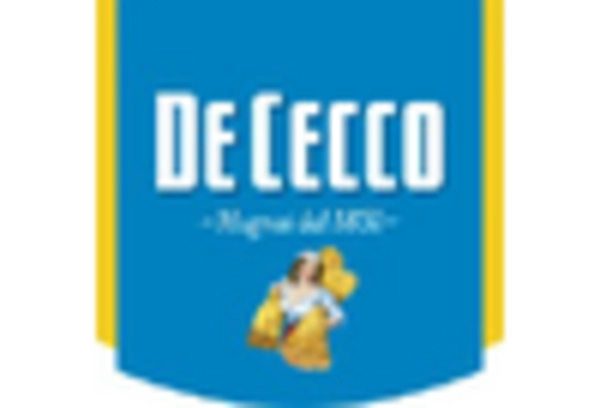Influence of Food Trends
Food trends significantly impact the pasta market in Argentina, as consumers become more adventurous in their culinary choices. The popularity of plant-based diets and the incorporation of international flavors into traditional dishes are reshaping consumer preferences. As a result, pasta products that align with these trends, such as vegetable-infused or protein-enriched varieties, are gaining traction. In 2025, it is projected that sales of specialty pasta will increase by 8%, reflecting a shift towards more diverse and health-oriented options. This influence of food trends is likely to continue driving innovation and growth within the pasta market.
Growth of Retail Channels
The expansion of retail channels is a significant driver of the pasta market in Argentina. Supermarkets and hypermarkets are increasingly dedicating shelf space to a variety of pasta products, making them more accessible to consumers. Additionally, the rise of specialty food stores and online grocery shopping is changing how consumers purchase pasta. In 2025, it is anticipated that online sales of pasta will grow by 12%, reflecting a shift in shopping habits. This growth in retail channels not only enhances product availability but also encourages competition among brands, ultimately benefiting consumers in the pasta market.
Impact of Economic Factors
Economic conditions play a crucial role in shaping the pasta market in Argentina. Fluctuations in inflation rates and consumer purchasing power directly influence pasta consumption patterns. In recent years, the average price of pasta has seen a rise of about 10%, prompting consumers to seek more affordable options. This economic pressure may lead to an increased demand for value brands and bulk purchasing. As a staple food, pasta remains a cost-effective meal choice, which could sustain its popularity even during economic downturns. Thus, economic factors are likely to continue influencing the dynamics of the pasta market.
Innovation in Product Offerings
Innovation is a driving force in the pasta market, with manufacturers increasingly introducing new products to cater to evolving consumer preferences. The rise of gluten-free and whole grain pasta options reflects a growing awareness of dietary restrictions and health trends. In 2025, it is estimated that gluten-free pasta will account for approximately 15% of total pasta sales in Argentina. This diversification not only attracts health-conscious consumers but also enhances the overall appeal of pasta as a versatile ingredient. Consequently, innovation in product offerings is likely to play a pivotal role in shaping the future of the pasta market.
Rising Demand for Traditional Cuisine
The pasta market in Argentina experiences a notable increase in demand for traditional Italian cuisine. This trend is driven by a cultural affinity for pasta dishes, which are often considered comfort food. As consumers seek authentic culinary experiences, restaurants and food manufacturers are responding by offering a wider variety of pasta products. In 2025, the market is projected to grow by approximately 5% as more households incorporate pasta into their weekly meals. This growth reflects a broader interest in culinary heritage and the desire for quality ingredients, which is reshaping the pasta market landscape in Argentina.

















Leave a Comment